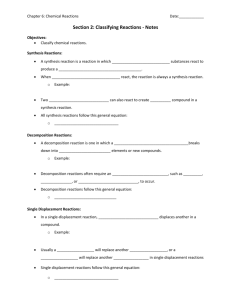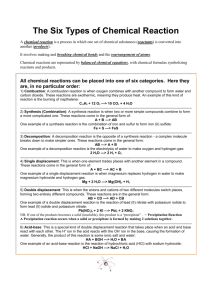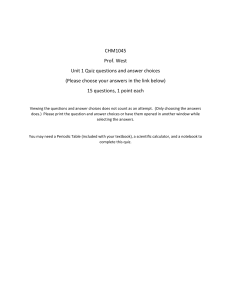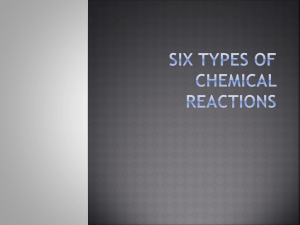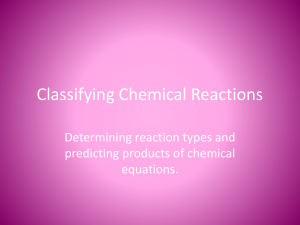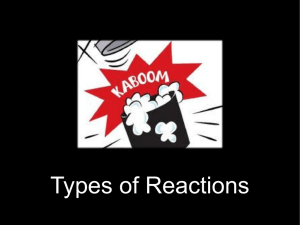Types of reactions worksheet
advertisement
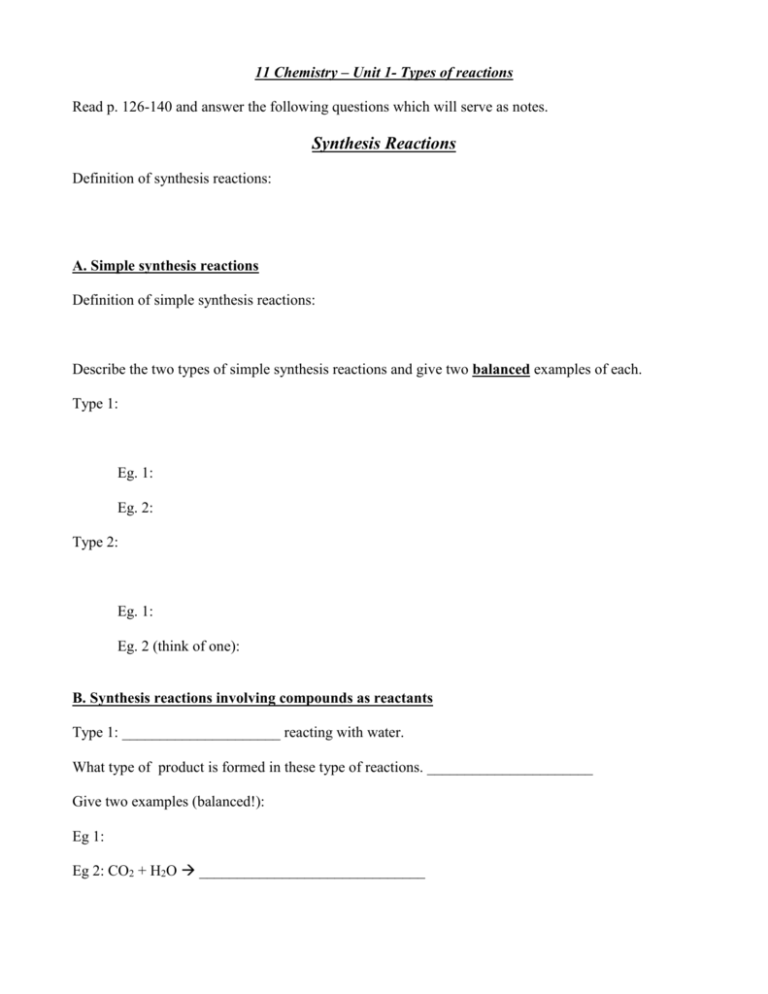
11 Chemistry – Unit 1- Types of reactions Read p. 126-140 and answer the following questions which will serve as notes. Synthesis Reactions Definition of synthesis reactions: A. Simple synthesis reactions Definition of simple synthesis reactions: Describe the two types of simple synthesis reactions and give two balanced examples of each. Type 1: Eg. 1: Eg. 2: Type 2: Eg. 1: Eg. 2 (think of one): B. Synthesis reactions involving compounds as reactants Type 1: _____________________ reacting with water. What type of product is formed in these type of reactions. ______________________ Give two examples (balanced!): Eg 1: Eg 2: CO2 + H2O ______________________________ Type 2: _____________________ reacting with water. What type of product is formed in these type of reactions. ______________________ Give two examples (balanced!): Eg 1: Eg 2: Na2O + H2O ___________________________ Do synthesis reactions always produce only one type of product? _________________ Give two examples: Eg 1: Eg 2: Decomposition Reactions Define a decomposition reaction: What are two types of decomposition reactions and give an example of each. Type 1: Eg Type 2: Eg. Single Displacement Reactions Define a single displacement reaction: Describe the two types of single displacement reactions and give and example of each. Type 1: Eg. Type 2: Eg. A. Single displacement and the metal activity series Describe the three types of single displacement reactions that involve metals and give an example for each. Type 1: Eg. Type 2: Eg. Type 3: Eg. The metal activity Series Copy table 4.2 on p. 130 below Describe how to use the series: B. Single displacement and Halogens Give and example of a S.D.R. involving two halogens Eg.: What is the activity series for halogens and describe how to use it? Give two examples. Eg 1: Eg 2: Hwk: p. 122 # 10, 11 a, b, 12, 13; p. 123 # 15, 16; p. 127 # 21 p. 131 # 22, 23, 24 p. 125 # 1 a, b, c, 2 a, b, c
